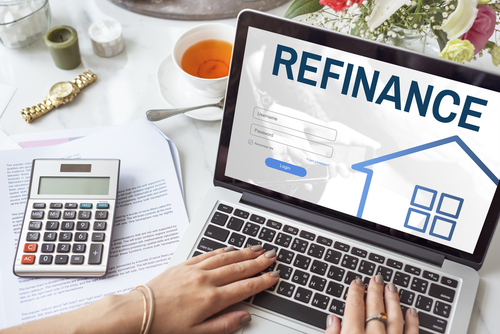 Refinancing your mortgage loan isn’t just for your primary residence. You can also take advantage of mortgage refinancing if you own rental properties. Many people do this to save money and potentially get more favorable loan terms. Knowing when and how to refinance a rental property is crucial. Today, we’ll review the reasons you may want to refinance and the steps to take to do so.
Refinancing your mortgage loan isn’t just for your primary residence. You can also take advantage of mortgage refinancing if you own rental properties. Many people do this to save money and potentially get more favorable loan terms. Knowing when and how to refinance a rental property is crucial. Today, we’ll review the reasons you may want to refinance and the steps to take to do so.
Contents of This Article:
- What Does Refinancing a Property Mean?
- Reasons to Refinance a Rental Property
- Steps to Refinance a Rental Property
- Pros and Cons of Refinancing a Rental Property
- Manage Your Investment Property With BMG
What Does Refinancing a Property Mean?
People refinance their homes all the time, whether they want to get a better interest rate, change the terms of their mortgage, or use the equity they’ve built up in the property. However, did you know that you can also refinance rental properties?
Refinancing a property is essentially replacing your current mortgage with a new one. Most people do it because it can help you save money or achieve other financial goals. If you’re an investor with several properties, refinancing your mortgage can help reduce the monthly payments on one or more of them.
Read along to learn why so many real estate owners choose to refinance their properties at some point during their mortgage term.
Reasons to Refinance a Rental Property
Rental property expenses add up quickly. However, there are ways you can reduce them, like refinancing your mortgage. Aside from saving money, here are some common reasons investors may consider a rental refinance.
- Lower Your Interest Rate- If you got your mortgage when interest rates were high and are now lower, you can benefit from refinancing. After all, who wouldn’t want to pay less in interest each month? Refinancing when rates are lower can help you save thousands over time.
- Change Mortgage Terms- You can also change the length of your mortgage term when you refinance. If you selected a 30-year mortgage at first but now want to pay it off in 15, you can save money on interest over time.
- Lower Monthly Payments- Lowering your interest rate and changing the terms of your mortgage can help lower your monthly payments. With fewer expenses, you can, in turn, take more home from rental income.
- Tap Into Home Equity- When you refinance, you can use the equity you’ve built up in one rental home to buy another or upgrade your current properties.
- Eliminate Mortgage Insurance- If you made a down payment of less than 20% when you bought your rental property, you likely have to pay private mortgage insurance (PMI). However, if you have enough equity built up, you can eliminate this fee by refinancing your mortgage.
Steps to Refinance a Rental Property
Now that we’ve gone over some of the common reasons investors refinance their rental properties, let’s look at some of the steps you’ll need to take if you want to do the same.
 Build Equity
Build Equity- Look at Your Finances
- Gather Documentation
- Find and Compare Lenders
- Apply for a New Loan
- Lock in Your Rate
- Close on the Loan
Build Equity
Before refinancing a rental property, you’ll need to build equity. Equity is the percentage of the home you own outright, and knowing how much you need and how much you have before starting the application process can help prevent rejection. Most conventional lenders look for at least 20% equity in owner-occupied properties, and many look for 25% if it’s a rental property.
Look at Your Finances
It’s important to know your financial situation before refinancing a rental property. For instance, what is your rental’s monthly cash flow? What are your expenses, and how will they change in the future? Do you need to make any major repairs or improvements? Asking yourself these questions can help you decide whether or not a refinance is a good idea.
Gather Documentation
Your lender will need several documents to start the refinancing process. Here are some that you may want to have ready to go.
- Proof of Income
- Proof of Expenses
- Social Security Number
- Driver’s License
- 1099 or W-2 Forms
- Proof of Homeowners Insurance
- Proof of Title Insurance
Find and Compare Lenders
Refinancing a property is typically less complicated than buying a new rental property. However, you’ll still want to shop around and compare rates from different lenders. That way, you can ensure you get the best deal on your refinance. While you may want to stay with your current lender for ease or to keep a strong relationship, you may be able to find lower rates with a different lender.
 Apply for a New Loan
Apply for a New Loan
When you’ve found the lender you want to work with, contact them to start the application process. You’ll need to submit all the documentation listed above, and the lender will verify your information and write a loan agreement.
Lock in Your Rate
Once your lender approves your application, the next step is locking in your interest rate. This is a crucial step in the refinancing process, as it establishes your rate for the loan. Remember, interest rates mentioned before this step may have been estimated, so this is when you can truly “lock” in your rate.
Close on the Loan
The final step is to close on the loan. Once the underwriting is finished, your lender will send you documentation on the costs and terms of the loan, which you will then carefully read and sign.
Pros and Cons of Refinancing a Rental Property
Before taking the leap and committing to refinancing your rental property, you’ll want to evaluate all the pros and cons. Here are a few points to consider if you’re thinking of refinancing.
Benefits of Refinancing
- Improved Cash Flow- Lowering your monthly mortgage payments by refinancing can improve your rental property’s cash flow.
- Access to Equity- If you’re doing a cash-out refinance, you can use the equity you’ve built in the home for renovations or to buy more properties.
- New Loan Terms- Refinancing allows you to change your mortgage terms to better suit your financial goals.
Disadvantages of Refinancing
- Additional Closing Costs- Refinancing involves closing costs, which can add up and may outweigh the potential savings you’re looking for.
- Extended Loan Term- Refinancing to lower your monthly payment may result in a longer loan term, meaning you’ll pay more interest over time.
- Stricter Requirements- Compared to refinancing a primary residence, refinancing a rental property loan may come with stricter requirements.
Manage Your Investment Property With BMG
Knowing when and how to refinance a rental property is crucial information for investors. After all, if you have the chance to lower your monthly bills, lock in a lower interest rate, and increase your cash flow, why not take it?
Need More Advice? contact us today!
If you’re looking for help managing your rental properties, Bay Property Management Group is there for you. Our team of experienced property management professionals can help you get the most out of your investment. Contact us today to learn how we can help your rentals in Baltimore, Philadelphia, Northern Virginia, and Washington, DC.

 Build Equity
Build Equity Apply for a New Loan
Apply for a New Loan